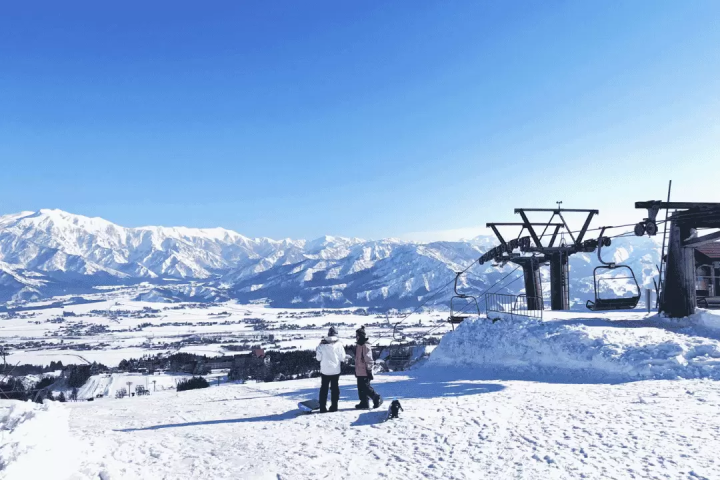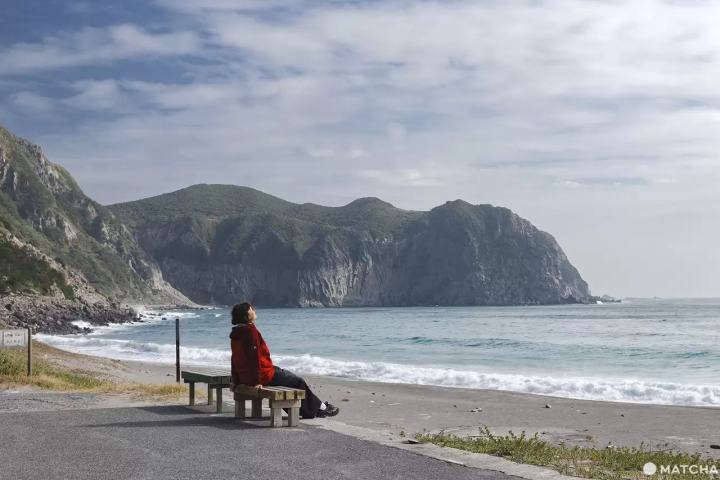Kyoto's Byodoin Phoenix Hall in Uji: Highlights, Access, Nearby Cafes

Byodoin Temple's Phoenix Hall is a remarkable monument of Buddhist architecture located in Uji, south of Kyoto. Learn how to get there, opening hours, admission fees, as well as the features and history of Byodoin, a World Heritage site.
Byodoin Temple in Uji: The Phoenix Hall
Byodoin Temple, located in the city of Uji, a short train ride south of Kyoto, is a World Heritage site with a history that goes back a thousand years ago.
Renowned worldwide for its Phoenix Hall, which was designed to resemble images of the Buddhist paradise, the Pure Land, Byodoin is a must-visit for those who seek deeper insights into how the Buddhist worldview shaped Japanese culture.
Uji is also famous for its production of matcha green tea, used as an ingredient for beverages and desserts, so a visit to this city will surely be rewarding.
Guide to Byodoin Phoenix Hall in Uji, Kyoto
Access, Tickets, and Opening Hours
The History of Byodoin Temple, a World Heritage Site
Highlights of Byodoin Temple
Byodoin Across the Seasons
How Long Should You Spend at Byodoin
Matcha Cafes and Places to Visit Nearby
A One-Day Itinerary in Uji, Including Byodoin
Access: How to Get to Byodoin Temple
The closest stations to Byodoin Temple are JR Uji Station and Keihan Electric Railway's Uji Station, both of which are a 10-minute walk from Byodoin.
If you're using the JR Pass, JR West Kansai Area Pass, or JR West Kansai Wide Area Pass, use the JR lines.
Visitors using the Keihan Electric Railway Kyoto-Osaka Sightseeing Pass 1-2 Day Pass can prioritize the use of the Keihan lines.
From Kyoto to Uji
1. From Kyoto Station, take the JR Nara Line and get of at Uji Station. Total ride time: 17 minutes.
2. From Gion-Shijo Station/Sanjo Station, take the Keihan Main Line and get off at Nakashojima Station where you transfer to the Keihan Uji Line. After a 15-minute ride, get off at Uji Station.
From Osaka to Uji
1. From Osaka Station, take the JR Kyoto Line (27 minutes) and get off at Kyoto Station. From here, take the JR Nara Line (17 minutes) and get off at Uji Station.
2. From Yodoyabashi Station, take the Keihan Main Line (39 minutes) to Nakashojima Station where you transfer to the Keihan Uji Line. After a 15-minute ride, get off at Uji Station.
From Nara to Uji
From JR Nara Station, take the JR Nara Line and get off at Uji Station. Total ride time: 31 minutes.
Byodoin Phoenix Hall Tickets
| Adults | Middle/High School Students | Elementary School Students | Notes | |
| Garden + Byodoin Museum Hoshokan | 700 yen | 400 yen | 300 yen | |
| Phoenix Hall Admission | 300 yen | 300 yen | 300 yen | 50 visitors admitted every 20 minutes |
Byodoin Phoenix Hall Opening Hours
Byodoin is divided into different areas with varying opening hours. Please see the following list for details.
| Area | Opening Hours | Last Admission Time |
| Garden | 8:30 - 17:30 | 17:15 |
| Phoenix Hall* | 9:30 - 16:10 | |
| Byodoin Museum | 9:00 - 17:00 | 16:45 |
| Museum Souvenir Shop | 9:00 - 17:00 | |
| Tea Room TOKA | 10:00 - 16:30 | 16:00 |
*Admission starts at 9:00, with a limit of 50 people per session (20 minutes). Please gather 5 minutes before the start.
The History of Byodoin Temple, a World Heritage Site
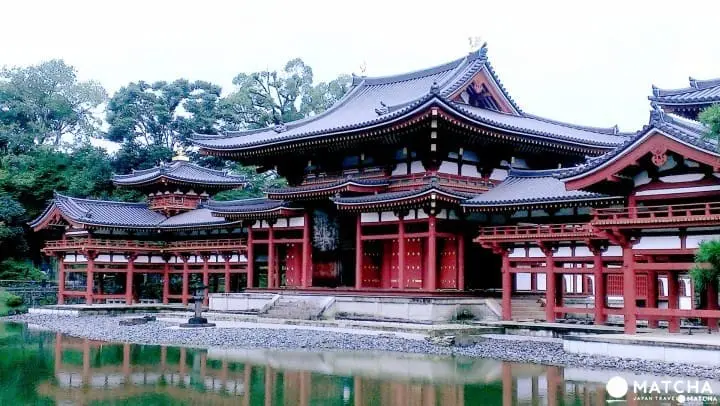
During the early Heian period (794-1185), the town of Uji, located south of Kyoto, was an area with luxurious villas of the nobility.
The land where Byodoin Temple now stands changed hands multiple times, and in 998, it was the villa called Ujiden of Fujiwara no Michinaga (966-1028), an influential statement of the time.
After Michinaga's passing, his son Fujiwara no Yorimichi inherited the estate. In 1052, he considered transforming the villa into a temple. The former sleeping quarters of Ujiden were converted into a Buddha hall, and the following year saw the construction of the Amida Hall, also known as the Phoenix Hall, designed in the image of the Pure Land, the Buddhist Paradise. The temple was named Byodoin.
In 1336, Byodoin Temple was affected by the flames of war, with almost everything burning except for the Phoenix Hall. During the late 15th century, efforts were made to restore the temple, leading to the establishment of Jodoin and subsequent additions of the Arhat Hall and other structures.
In 1670, the Phoenix Hall underwent extensive repairs. Following a large fire in Uji, Byodoin Temple fell into disrepair until the Meiji period (1868-1912) when conservation efforts were revitalized, leading to numerous renovations. Through collective endeavors, many structures and artifacts within its premises were designated as National Treasures or Important Cultural Properties in Japan.
In 1994, Byodoin Temple was designated a World Heritage Site under "Historic Monuments of Ancient Kyoto."
Byodoin Temple Highlights
Byodoin Temple is not just about the main building; the details of its architecture are also significant and worth observing carefully.
1. The Golden Phoenix
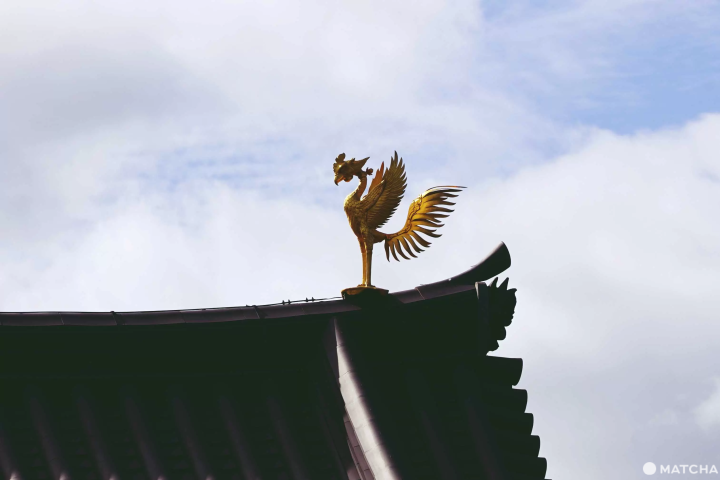
At Byodoin, the Amida Hall is also known as the Phoenix Hall, making the phoenix on the roof of the main hall one of the must-see highlights at Byodoin.
The golden phoenix statue standing on the roof is a replica. The original phoenix statue has been present since the establishment of Byodoin, but over the centuries, it suffered severe corrosion from the elements. It is now preserved inside the Byodoin Museum Hoshokan.
2. The Phoenix Hall

The Phoenix Hall symbolizes the prosperity of the Fujiwara clan and stands as the sole historical site among temples constructed by the Heian aristocracy where both the building and the garden have survived, holding immense significance.
Its greatest feature lies in the fact that the Amida Hall is situated on the central island within the pond, evoking the image of a palace from the Buddhist paradise. The vermilion-colored hall reflects beautifully on the water's surface.
We highly recommend the additional paid tour to explore the interior of the Phoenix Hall. Although the explanations are in Japanese, the opportunity to see up close the golden statue of Amida Buddha, as well as to admire the paintings of the Pure Land on the surrounding walls and the hanging Bodhisattva figures in the clouds, is truly priceless.
Please note that photography is not permitted inside the Phoenix Hall.
3. Amida Buddha Statue

Picture courtesy of Wikipedia Commons, Zairon, CC 4.0 International
The Amida Buddha statue at Byodoin is the only one in Japan confirmed to be crafted by the master sculptor Jochi. The gentle and serene countenance, along with the gracefully flowing lines of the robes, showcase Jochi's exquisite craftsmanship.
While the statue can be partially seen from across the pond, it is still recommended to venture inside the Phoenix Hall to appreciate the compassion of Amida Buddha up close, allowing for a deeper understanding of the aspirations towards the Buddist paradise shared by the people who built this hall.
4. The Praying Boddhisatvas on the Clouds
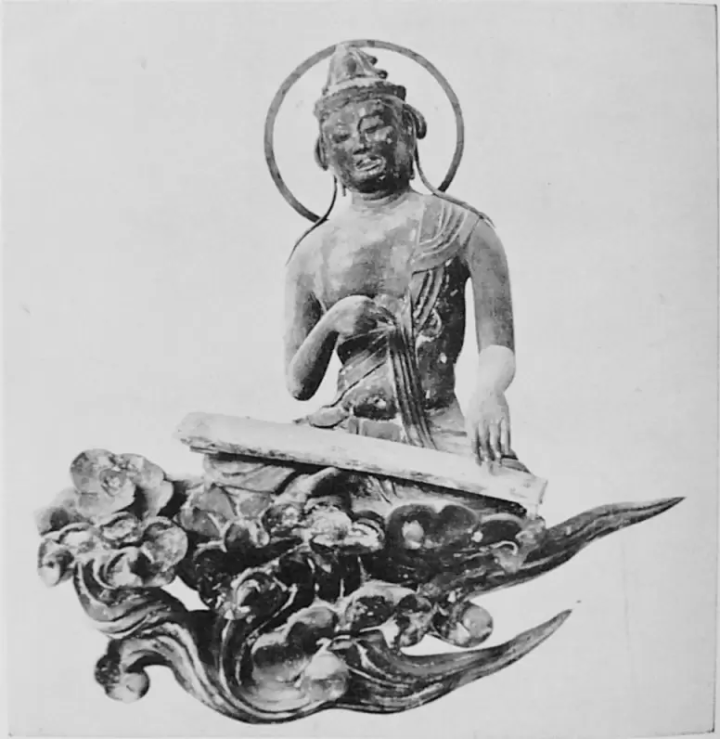
Picture courtesy of Wikipedia, Fukuyama Tsuneo, Mori Noboru - Byodoin Encyclopedia, Public Domain
Within the Phoenix Hall, there are 52 relief sculptures of Bodhisattvas hanging on the walls. Each Bodhisattva, riding on a cloud, is considered to be welcoming the souls into Paradise alongside Amida Buddha.
These 52 Bodhisattvas hold various musical instruments in their hands, each displaying different postures that are vivid and varied. All of them are designated as national treasures in Japan, with 26 of them relocated to the Byodoin Museum Hoshokan for preservation.
5. Byodoin Museum Hoshokan
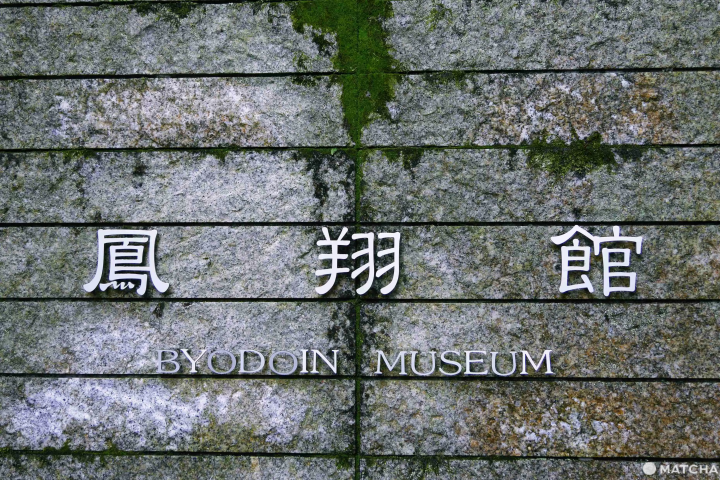
The Byodoin Museum Hoshokan, located within the Byodoin precincts, opened in 2001. It houses numerous national treasures and important cultural properties, including a temple bell from the Heian period, an Eleven-faced Kannon Bodhisattva statue, as well as the aforementioned Bodhisattvas in the Clouds and the original Phoenix statue.
Additionally, visitors can experience the emotional impact of seeing the restored wall paintings of the Phoenix Hall using the latest digital technology, bridging thousands of years of history.
Seasonal Highlights

The Byodoin temple precincts are home to a variety of flowering plants that attract visitors with their charm throughout the four seasons.
In early spring, the pale pink weeping cherry blossoms serve as a backdrop to the vermilion Phoenix Hall. Towards late spring, the three wisteria arbors within the grounds fill the air with a sweet floral fragrance. One of these wisteria trees near the pond is over 280 years old!
Apart from seasonal flowers, during excavations in the past, seeds of plants like Byodoin lotus, rose of Sharon, and camellias were discovered. Through dedicated efforts, these plants bloom every year according to the seasons. For further information on the seasonal flowers within Byodoin, please refer to the official website.
Visiting Route and Time
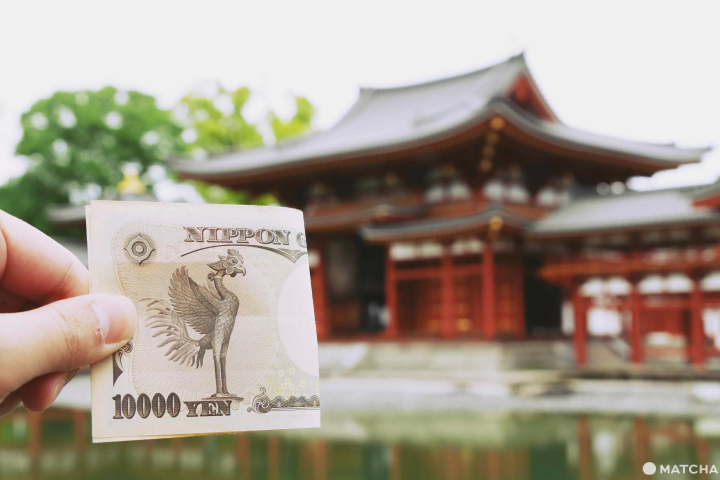
Byodoin's official website recommends itineraries of 50 and 90 minutes, excluding the interior visit of the Phoenix Hall, which typically adds up to about one to one and a half hours.
If you wish to explore the Phoenix Hall interior, securing a numbered token as soon as you arrive at Byodoin is advisable.
During busy periods, you might have to wait for about two or three hours before your turn. Therefore, obtaining the numbered token first allows you to stroll through the Byodoin gardens leisurely, visit the Hoshokan, receive a temple seal, take photographs, and then proceed to your designated visiting time of the Phoenix Hall.
7 Beautiful Places and Cafes to Visit Near Byodoin
There are plenty of delightful sights to enjoy and delicious foods to taste around Byodoin. Here are some recommendations to enrich your itinerary:
1. Tea Room Sabo TOKA
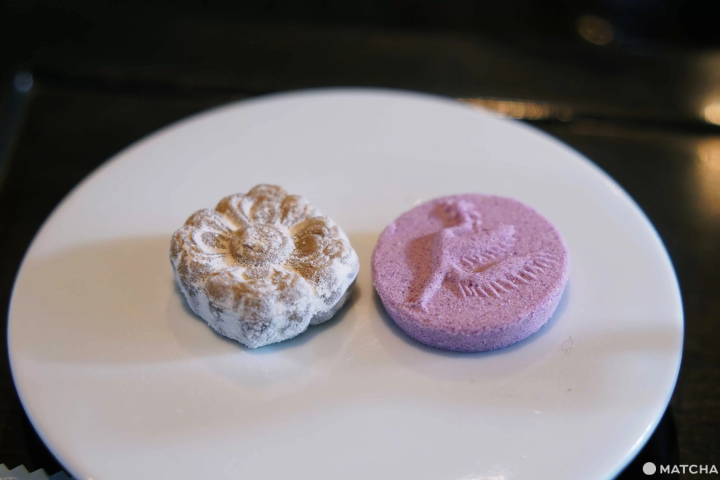
The tea room Sabo TOKA, located within Byodoin Temple, uses 100% Kyoto-produced tea leaves. Each beverage is prepared with meticulous attention to its brewing method.
Accompanied by seasonal treats, this tea room adds a perfect finishing touch to your Byodoin visit.
2. Byodoin Omotesando Street
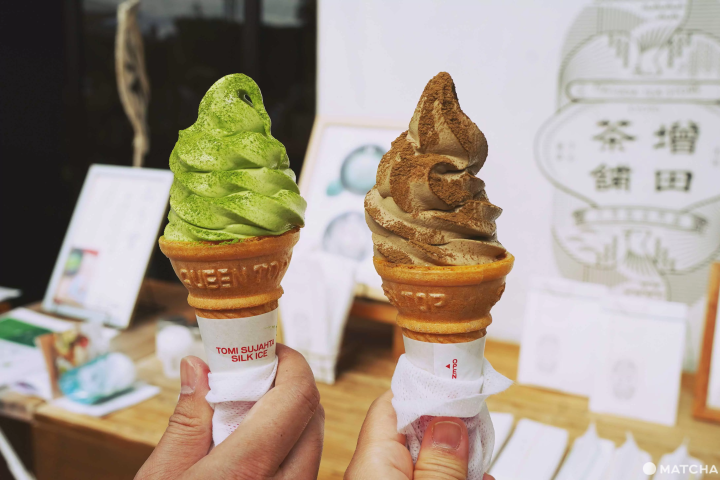
After visiting Byodoin, if you have time, exploring the streets of Uji is worth considering. Places like the Tale of Genji Museum and Uji Bridge, which are related to "The Tale of Genji," the first novel in world literature, are worth a visit.
Additionally, you can visit Ujikami Shrine, one of Japan's "three famous rabbit shrines" and a World Heritage Site, or Mimurotoji Temple, which is famous for its hydrangea flowers. These can all be included in your itinerary.
As you stroll along the Byodoin Omotesando Street with the rich aroma of tea in the air, you might find yourself craving a cup of tea. If you get the chance, find a quaint tea house to sit down, have a cup of tea, and enjoy some tea-based snacks.
3. Tale of Genji Museum

"The Tale of Genji," written by Murasaki Shikibu, is considered to be the world's first novel. The "Uji Chapters" within "The Tale of Genji" are set in Uji and have this place a must-visit destination for the fans of this literary work.
At the Tale of Genji Museum, Uji, visitors can enjoy a journey back to the Heian period (794-1185)and learn more about court culture back in those times through videos and projections, even if they haven't read "The Tale of Genji."
4. Mimurotoji Temple
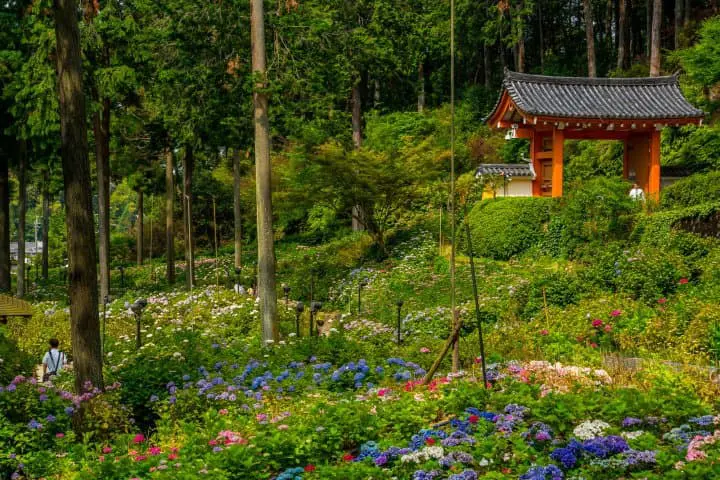
With a history spanning 1200 years, Mimurotoji is known as the "Temple of Flowers" for its vast array of blooms.
Particularly famous during the rainy season, its hydrangea garden is a spectacular sight, making it one of Kyoto's top spots for hydrangeas.
Hotels near Mimuroto Temple
5. Ujikami Shrine

One of the shrines listed as a World Heritage Site, Ujikami Shrine, often called Ujigami Shrine, features Japan's oldest shrine architecture, and the grounds are scattered with rabbit motifs, making it one of Japan's renowned rabbit shrines.
Nearby, Uji Shrine is known as a shrine visited by people who want to pray for academic pursuits and can also be included in your travel plans.
6. Starbucks Kyoto Uji Byodoin Omotesando Store

This Starbucks store is located in a building with a gabled roof that exudes a traditional Japanese temple-like atmosphere.
Featuring large glass windows that frame the view of Byodoin Temple, this coffee shop is especially stunning during the autumn maple leaf season, creating a breathtaking ambiance.
Starbucks Kyoto Uji Byodoin Omotesando Store
Location: 21-18 Uji Renge, Uji City, Kyoto
Official website: https://store.starbucks.co.jp/detail-1443/
7. Nakamura Tokichi Main Store

The top souvenir choice in Uji is Uji green tea, known as Uji-cha, and matcha green tea. Numerous shops sell these delightful products, making it challenging to decide where to go.
Uji tea, a prized green tea alongside those from Shizuoka and Sayama, ranks among Japan's finest. Visitors must sample this premium green tea known for its rich aroma and flavor, making it an excellent gift.
Nakamura Tokichi Main Shop is a renowned tea store chain in Kyoto. Besides offering various types of matcha powder and green tea treats for purchase or immediate enjoyment, they provide a tea ceremony experience for interested visitors.
A One-Day Itinerary in Uji, Including Byodoin
If you have a day to spare during your visit to Kyoto, consider a day trip to Uji. Here are two recommended routes:
A Walking Route Themed around the Tale of Genji
Visit the Tale of Genji Museum, Uji Shrine, the Uji Jujo Monument, Byodoin Temple, Uji Bridge, the Murasaki Shikibu Statue (located right by the bridge), and the ancient remnants of the Yume-no-Hashi Bridge.
Comprehensive Uji City Sightseeing Route
Visit Byodoin Temple, then take the Keihan Main Line to Mimurotoji Station and explore Mimurotoji Temple.
During the hydrangea season at Mimurotoji Temple, more time may be needed for photography. If you are keen on capturing the hydrangeas, it might be less advisable to plan visits to both Byodoin and Sanjusangendo Temple on the same day.
Visit Byodoin Temple and the Phoenix Hall
Byodoin Temple and its Phoenix Hall carry the essence of the opulent and magnificent culture of the Heian period, along with the Pure Land Buddhist thought that flourished during that era.
A visit to Byodoin in Uji is a must to personally experience the emotional impact brought by the culmination of the late Heian-period aesthetics!
Read also
I used to live in Japan and managed to conquer 78 out of the 100 famous castles and 12 existing castle towers in 8 years. As a history enthusiast, I also have a passion for baseball and Japanese dramas, which have driven me to visit all 47 prefectures. I hope to convey not only the scenery of Japan but also more of its culture and way of life.




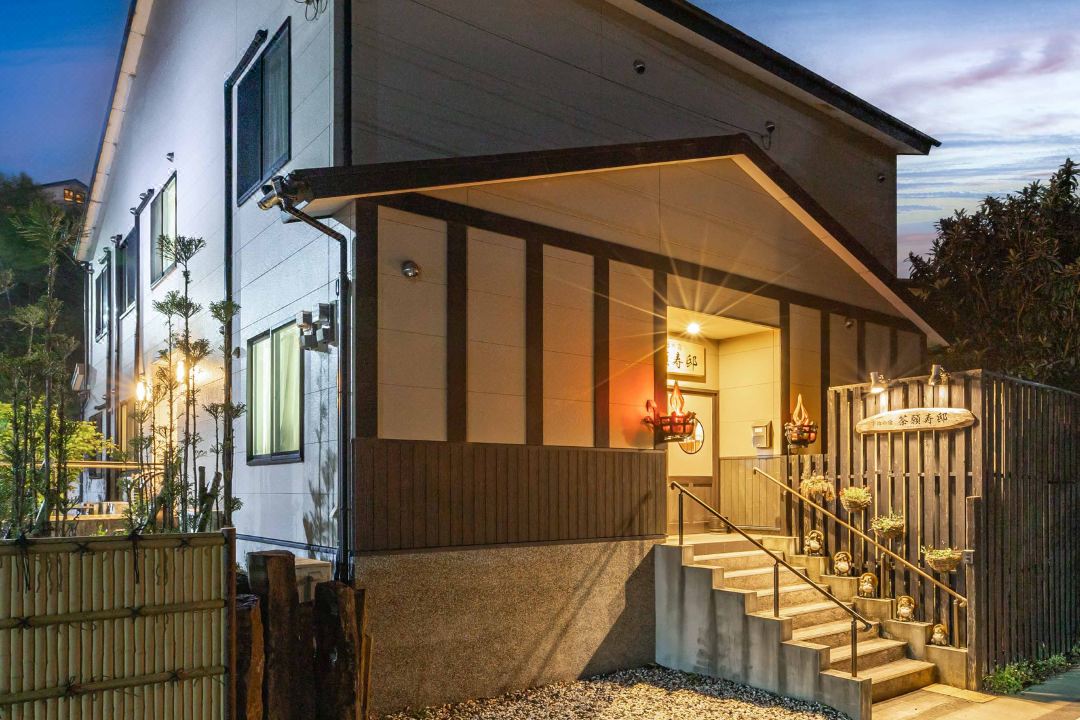

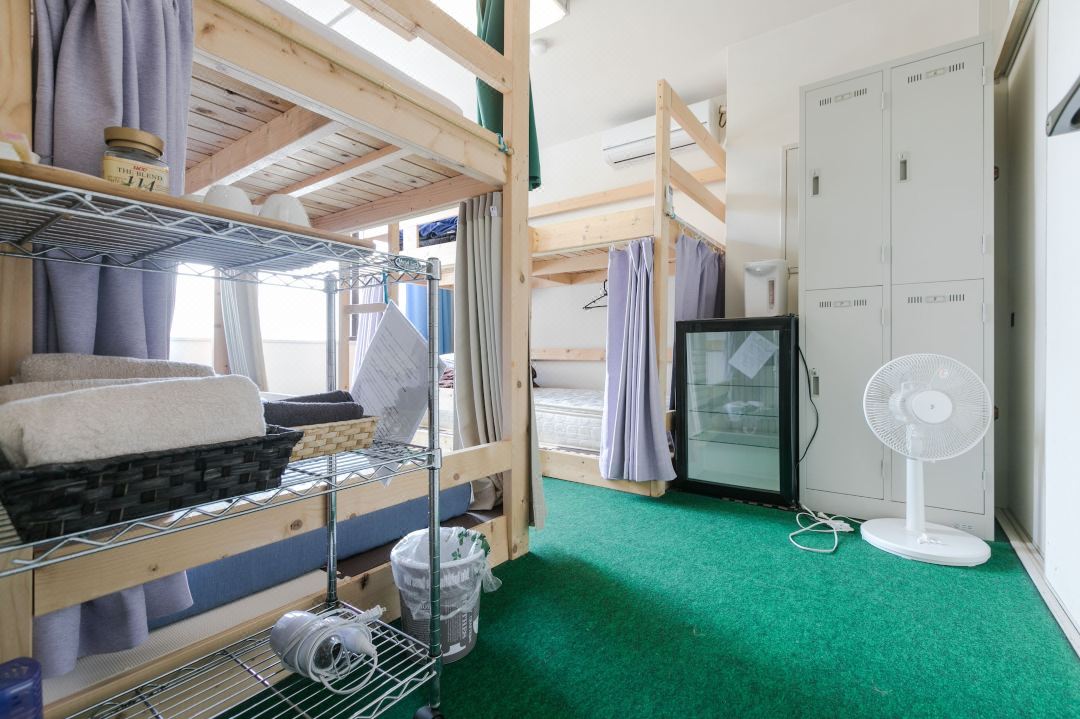




































![[30 minutes by train from Meitetsu Tokoname Station!] A must-see for couples! Recommended date Feature Articles in Aichi Prefecture](https://resources.matcha-jp.com/resize/720x2000/2025/12/19-253428.webp)
